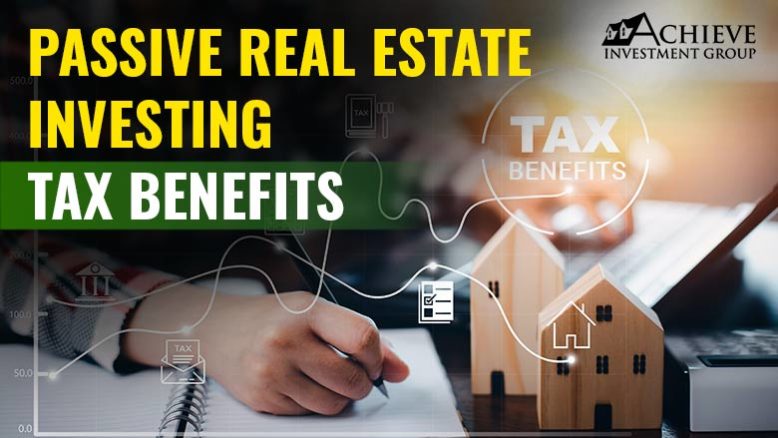Passive Real Estate Investing is a strategy that seeks to create a stream of passive income by purchasing real Estate and renting it out. This is similar to Passive Income; however, in this case, you use your own money to purchase Real Estate instead of investing other people’s money. Passive real Estate investing involves owning rental properties and letting someone else manage them. You earn income from the rent payments, but you don’t have to do any of the day-to-day management of the property. The passive income tax benefits of investing in real Estate are substantial. Investing in real Estate allows you to deduct up to $25,000 from your taxable income each year. This deduction is called depreciation and can be claimed on residential or commercial property. Passive real Estate investing is often considered the simplest way to make money with your properties. It’s also much easier than buying a home, fixing it, and selling it. When you invest in a property as a passive investor, there are no repairs or improvements to worry about. Instead, you can find a good deal on a rental property, sit back, and collect monthly checks from renters. Passive Real Estate Investing Tax Benefits There are potential tax benefits to investing in real estate, including multifamily properties, through a passive income strategy. When you invest in real estate, not only do you receive a larger return on your investment, but you also have the potential to save money on taxes. The following are some of the more common tax benefits of passive RE investing: Tax Savings: When you buy real Estate as an investment, it may be taxed as ordinary income or as capital gains. No special tax breaks and deductions are allowed if it’s taxed as ordinary income. If it’s taxed as capital gains (which is usually preferable), then you can potentially save money by paying lower rates on long-term capital gains rather than ordinary income tax rates Mortgage Interest Deductions: You can deduct mortgage interest payments made on loans used to finance investment property; however, the limit is $1 million per year total across all mortgages Depreciation Deductions: You can deduct depreciation from your rental income before calculating your taxable income. Depreciation is an expense related to owning real Estate, but it’s not an actual cash outlay. Instead, it’s an allowance for the wear and tear on your property over time due to normal use, maintenance, and repair costs. You don’t have to pay taxes on depreciation because it’s not cashing in hand — it’s just an accounting method for tax purposes. Tax-deferred growth: When you invest in a traditional IRA, 401(k), or other retirement accounts, you defer taxes until withdrawal. However, with an investment property, you can defer taxes during the holding period and any improvements made to the property. You can also deduct depreciation on any major improvements made to the property or building. Losses and write-offs: When you buy a property, its value can change over time — sometimes quickly. Real estate investors may see their properties increase in value over time, but they must also be prepared for losses if the market turns worse. Fortunately, the IRS allows investors to deduct losses from their income taxes in most cases. Passive Real Estate Investing Tax Benefits FAQs What expenses can I write off as a passive real estate investor? As a passive real estate investor, you may be able to write off certain expenses related to your rental properties against your rental income. These expenses can include the following: Property management fees Maintenance and repair costs Insurance premiums Taxes and assessments Interest on a mortgage or other debt related to the property Legal and professional fees, such as for a property manager or attorney Utilities and other services provided to tenants Advertising and marketing expenses to find tenants Travel costs for managing the property, such as for inspections or meetings with tenants It’s important to keep detailed records of all rental property expenses, including receipts and invoices, to support any deductions you claim on your tax return. You should also be aware that there may be limits on the amount of expenses you can write off, and some expenses may not be deductible. Consult with a tax professional for guidance on the specific deductions you can claim. How do I calculate the depreciation deduction for a rental property? The depreciation deduction is a tax benefit that allows investors to recover the cost of a depreciable asset, such as a rental property, over time. To calculate the depreciation deduction for a rental property, you will need to determine the following: The property’s basis: The basis of a property is typically its purchase price, plus any additional costs, such as closing costs and improvements, that add to the property’s value. The property’s useful life: The useful life of a property is the amount of time it is expected to be used for business or income-producing purposes. The useful life of a rental property is typically 27.5 years for residential properties and 39 years for nonresidential properties. The property’s depreciation method: There are several methods for calculating the depreciation deduction for a property, including the straight-line method and the declining balance method. The straight-line method spreads the basis evenly over the property’s useful life. In contrast, the declining balance method allows for a larger deduction in the early years of the property’s life. Once you have determined the property’s basis, useful life, and depreciation method, you can use the following formula to calculate the annual depreciation deduction: Annual depreciation deduction = (Property basis) / (Property useful life) x (Depreciation method factor) For example, if you purchased a rental property for $200,000, with $20,000 in closing costs and improvements, for a total basis of $220,000, and you use the straight-line method with a 27.5-year useful life, your annual depreciation deduction would be: Annual depreciation deduction = ($220,000) / (27.5 years) x (1) = $8,000 Note that this is just an example, and … Read more






